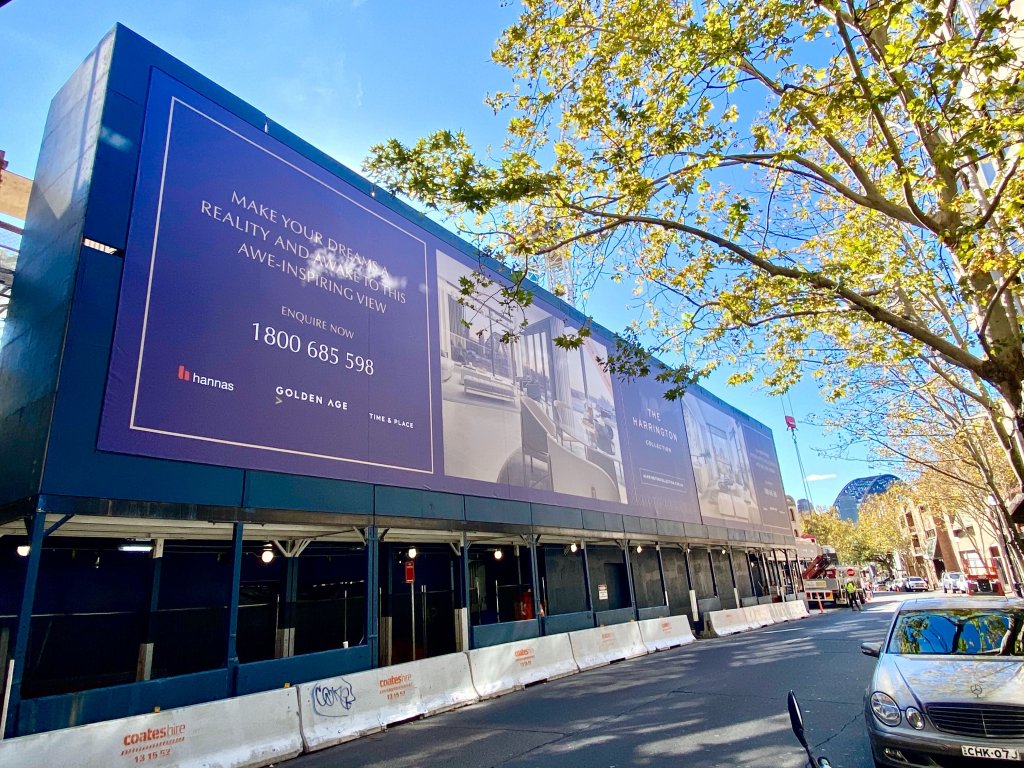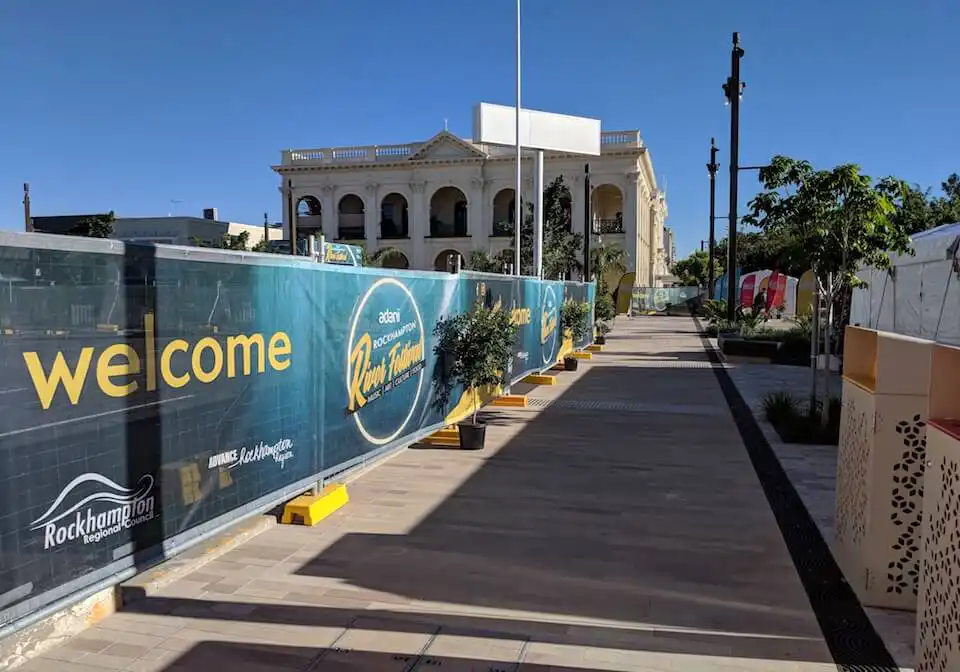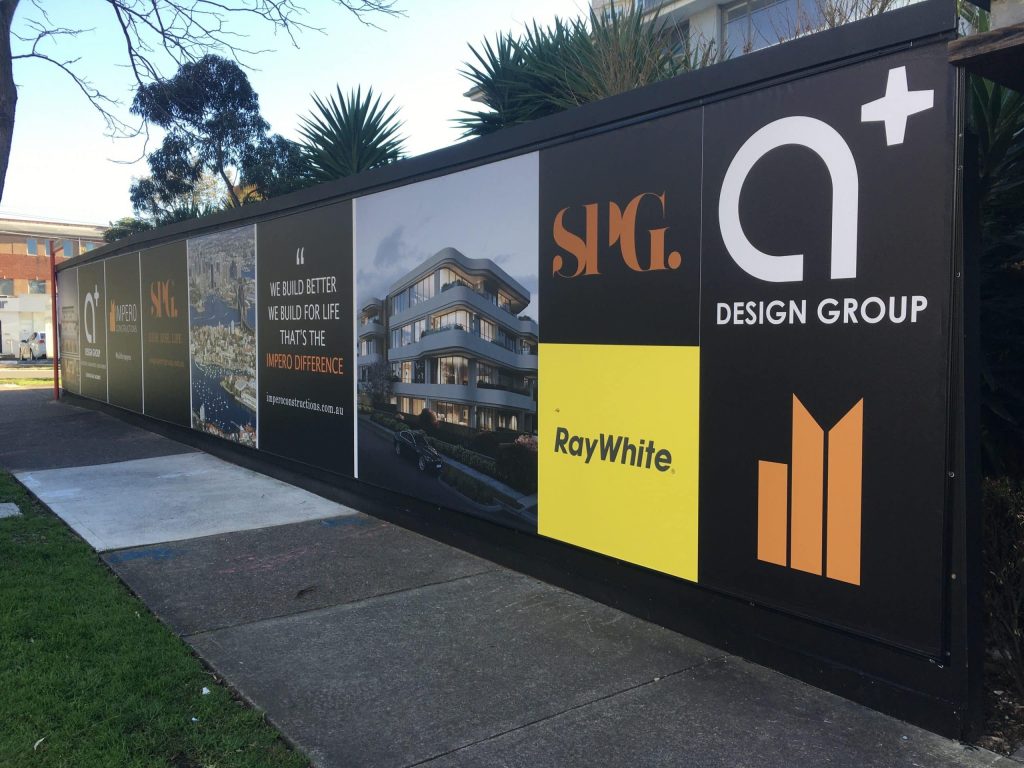Construction hoarding is everywhere. If a city is growing, then someone somewhere is putting up a hoarding! This temporary structure, erected around a construction or development site, is not only required to meet regulations but also presents a perfect opportunity to enhance site safety and brand recognition. Fulfilling a practical, aesthetic, and marketing purpose, hoarding is so much more than the necessary ‘hassle’ it can sometimes feel like. On the contrary, if you make your hoarding an integral element of your development and project strategy, it’s another arrow in your business arsenal!
Read on to get the low-down on this up-and-coming marketing strategy. We’ll explore what hoarding actually is, and why it’s so important to your project on so many levels. You’ll never look at construction hoarding the same way again!
What Exactly is a Hoarding?
Construction hoarding denotes any temporary fencing structure erected around a building site or in a public place. Its main function is to create a barrier between the site and the public, limiting traffic and access within the project area. Despite potentially being perceived as a necessary evil that costs managers additional materials and labour, this temporary structure can add a shed-load of value to your development! However, there are different types of hoarding to wrap your head around before committing.

Plywood
Plywood is a lightweight and easy-to-use material that can be readily decorated and erected around the site. Lumber prices are increasing though, and plywood is probably more valuable used elsewhere on the site. Furthermore, plywood is generally single-use and difficult to recycle once it has been treated.

Temporary Fencing
Temporary fencing is highly accessible, more affordable than plywood, and affords adequate protection for the public. To increase your hoarding’s capacity for containing dirt and debris, however, simply cover your temporary fencing with mesh or screens, which also happen to present significant branding and marketing opportunities. Temporary fencing is also easier to reuse than plywood, and it can withstand significant abuse from weather, energetic passers-by, or construction-site chaos. In extreme outdoors weather, though, your temporary fencing may need reinforcing.

PVC
Polyvinyl Chloride, or PVC, is super effective at protecting both the site and the public. It provides an airtight and secure temporary wall which makes it ideal for indoor projects. It’s also easy to brand with bright and vibrant graphics. However, it is often discarded upon project completion, making it a less environmentally friendly option. Industry stakeholders are consequently rallying around the use of recycled PVC, which would save this effective hoarding option from becoming more construction waste.
Hoarding: more than public safety and meeting regulations
Hoarding around construction sites is required by law, ensuring both the security of staff and the public. Furthermore, it protects the site from debris, dust, and prying eyes (or hands!), but it’s so much more!
1) Boost your Branding
Since you’re going to be installing hoarding anyway, you may as well make it a central element in your project development strategy. How? By framing it as a large-scale branding opportunity! Whatever material you chose for your hoarding, it’s easy to add your very own graphics by installing screens over plywood or temporary fencing. At Mesh Direct, we use vinyl to create UV-stabilised, durable, and stunning hoarding banners for your project. Decorate your hoarding with your logo, brand colours, and USP to boost your brand recognition amongst the public. Think of it as a massive, long-term billboard just for you!
2) Advantageous Advertising
An advertising hoarding is highly cost-effective compared to a similar-sized billboard, so don’t be afraid to advertise specific products or services on this essential piece of infrastructure. You may as well put that space to good use!
3) Calling All Customers
If you’ve done steps 1 and 2 right, hoarding is your new best friend when it comes to enticing future customers and clients. Let your brand and service speak for themselves!
Ask the Experts
At Mesh Direct, we’re here to hold your hand throughout the whole process, from choosing your hoarding to coming up with a graphic design that works for you. Call us for a quote or advice!






